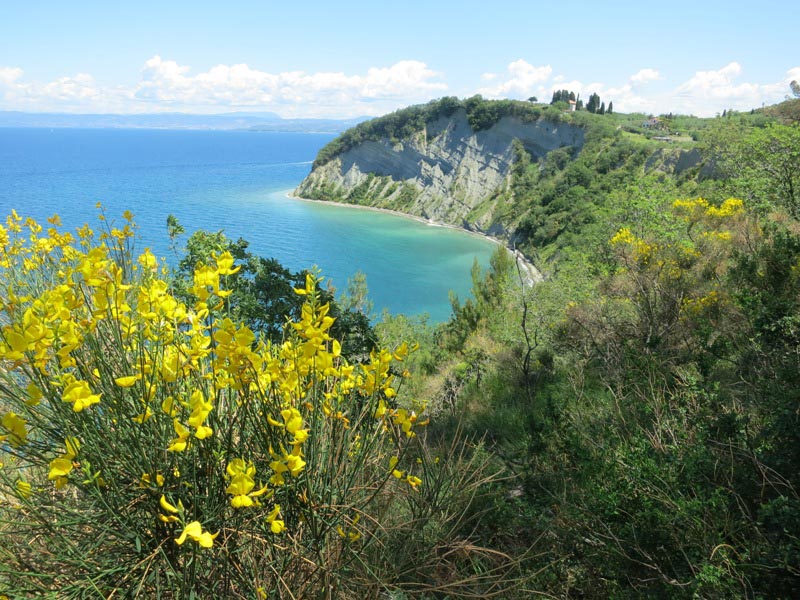MUSICAL SUGGESTIONS
18 - The Cliffs of Strunjan
Strunjan
In Strunjan, the young Giuseppe spent a cheerful and carefree childhood. Around 1700, the Tartini family from Piran built a country villa with a spectacular view of the sea and the town of Piran, close to the small church of S. Basso. their farm extended from the coast to the Strunjan Cross and included broad olive groves, saltpans and an area for fish farming. Today, in many respects, the image of Strunjan reflects that enjoyed by Tartini. Over the centuries, the city lived in close relationship with neighbouring Piran. While Piran, that had sprung up on the foundations of a settlement dating back to late antiquity, developed into a typical Medieval city, Strunjan remained the natural economic hinterland of the city with excellent climatic conditions for saltmaking and fertile ground for the cultivation of crops, fruit and vegetables. olive trees and vines.
Traditional economic activities, such as terraced agriculture, coastal fishing and artisanal saltmaking that continue to prosper today, have contributed over time to the creation of a cultural landscape that has defended itself well from excessive urbanization, to become the only example of settlement with scattered houses anywhere along the Slovenian coast. The natural attractions of Strunjan certainly include the 4 km long cliffs, 80 metres high, that rise steeply above the sea, offering unique viewpoints, reachable by following the path on the rocky ridge, from where you can admire the entire Gulf of Trieste. Uncontaminated nature, nowadays protected as a natural park, offers innumerable possibilities to enjoy a walk beside the sea at the foot of the mighty cliffs, along the natural paths up to the exceptional viewpoint near the Strunjan Cross, or to visit the Strunjan salt pans, active for over 700 years.
Info: www.portoroz.si


